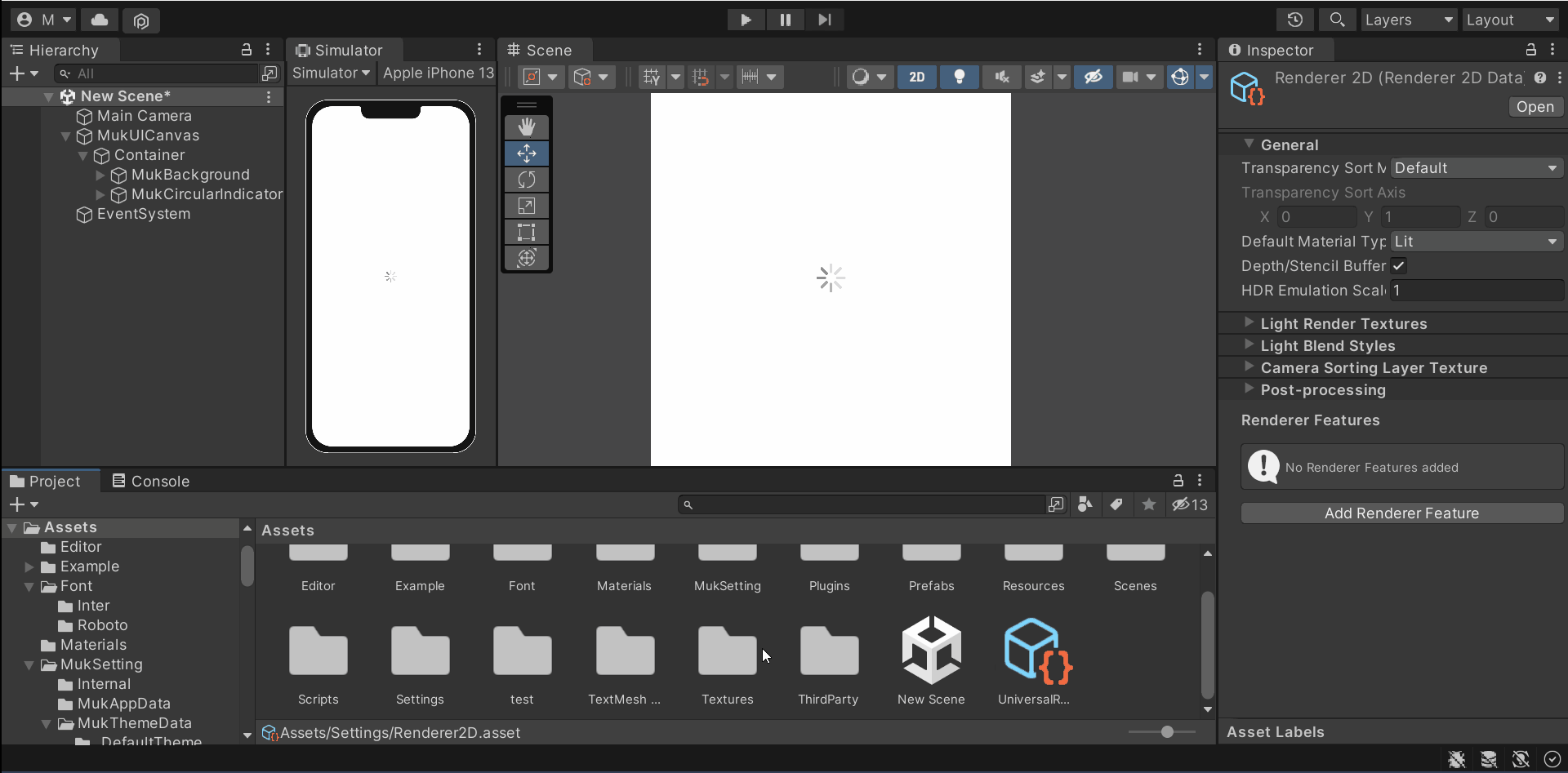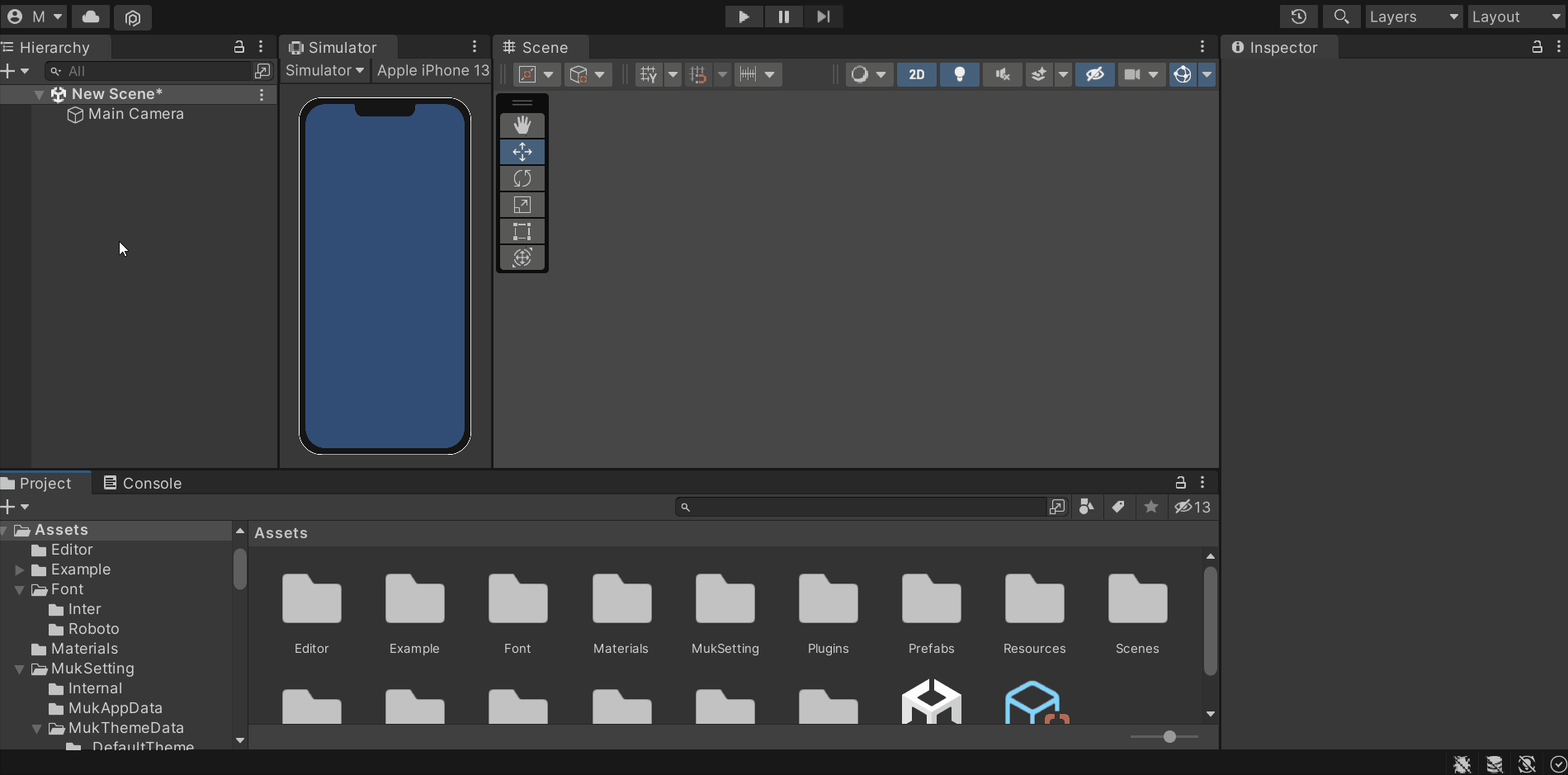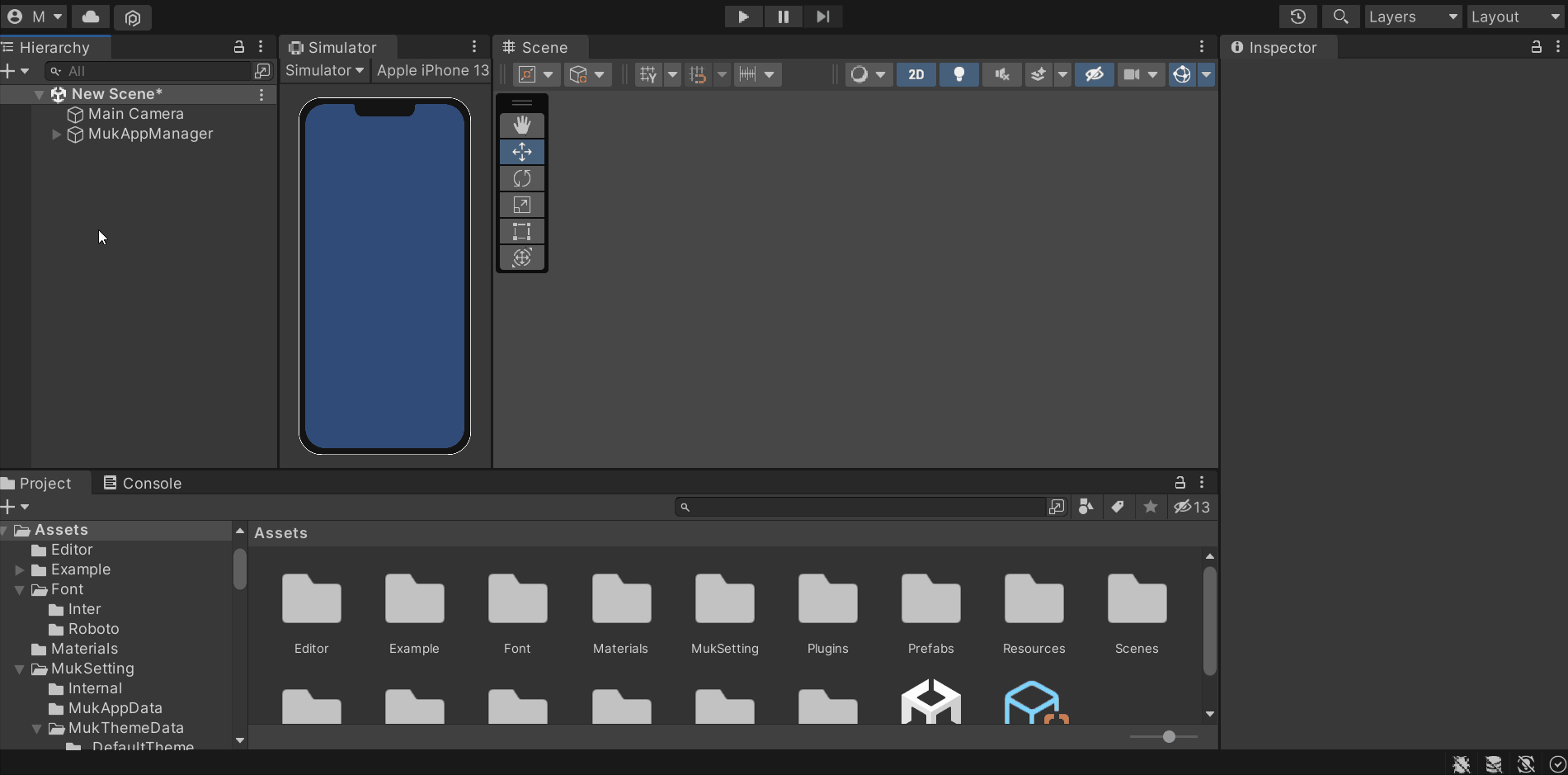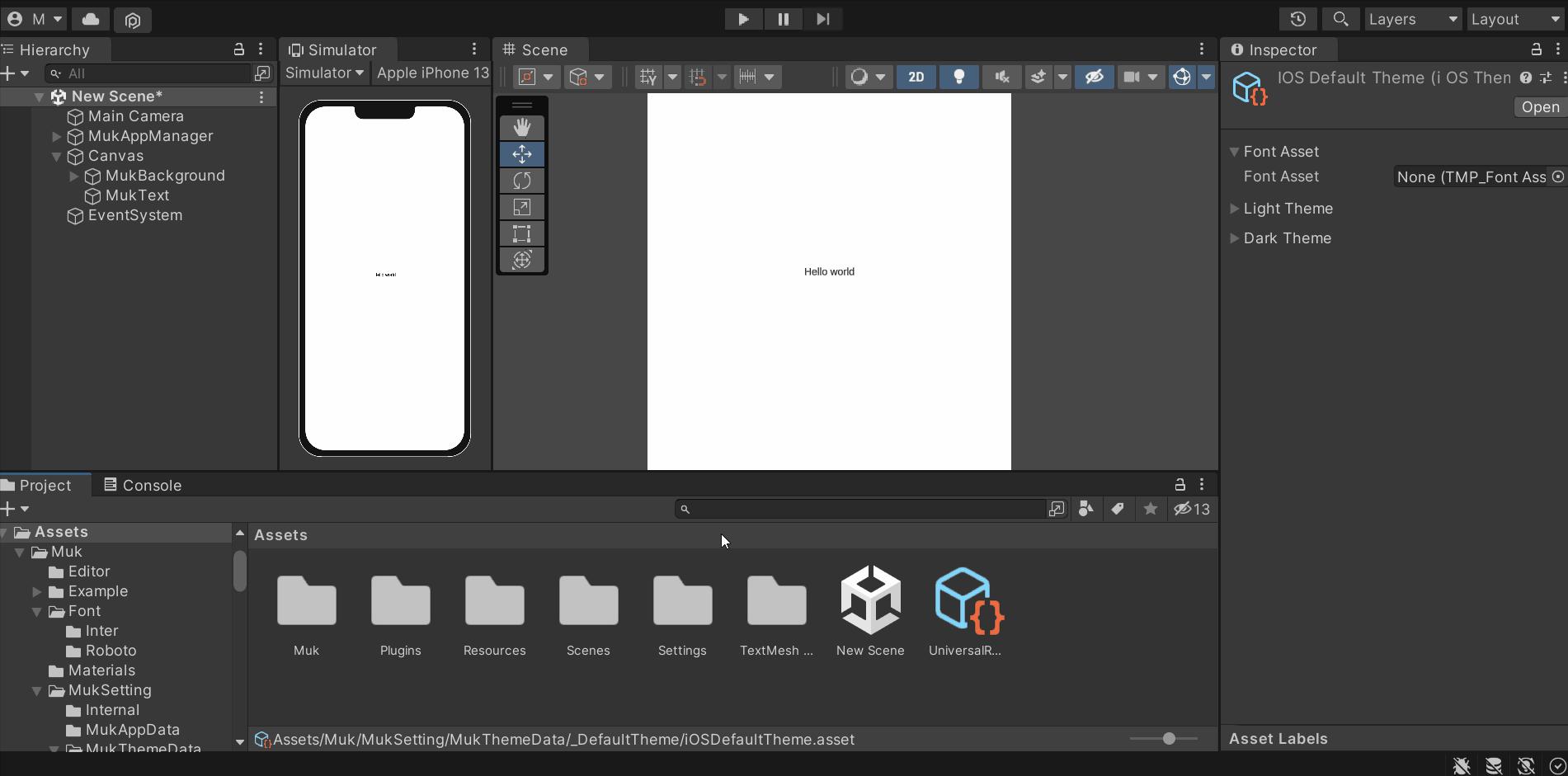Quick Start with Muk
Got the asset (Muk)? Great! Let's get started.
Please go through this document to
understand how Muk works.
Download TMP and DOTween
First things first, Muk is heavily dependent on TextMeshPro and DOTween, so make sure you have already imported the two assets into your project.
TMP
If you don’t have TMP, simply right-click in Hierarchy > UI > Text – TextMeshPro. It will guide you to install TMP.
DOTween
If you don’t have DOTween, go to the DOTween Unity Asset, download and install it. DOTween provides both free and paid versions. You can choose whichever version you prefer.
URP Setting (URP Only)
* If you are using the built-in Render Pipeline, you can skip this part.
For iOS, some Muk components use the blur effect. For blur to work in URP, you will need to add a renderer feature to the URP renderer. Go to Project > Settings > select the Renderer Data you want to support in the project. Click the Add Renderer Feature button and select UI Blur Render Pass Feature.

Adding Muk App Manager to the scene.
For Muk components to work, you will need to have the Muk App Manager in the scene. Right-click in Hierarchy > Muk > Muk App Manager. The Muk App Manager will handle everything for you. Muk App Manager will not get destroyed when loading a new scene, so you don’t need to add it to all the scenes — just add it to the first scene.
For development purposes, you can temporarily add the manager to the scene that you are working on. But remember to remove the manager from all the scenes and add it to the first scene only when releasing the app.

Adding Muk Components to the scene
Finally, the great part – how to add Muk components into your scene.
Since Muk uses Unity UI, you can work with Muk as you would work with Unity UI.
You can simply right-click in the Hierarchy > Muk and select whatever Muk components you want to add to your scene.
And now you can edit the Muk component values to make it look however you want. Please go through the Muk Components sections in this document to understand how each Muk component works.

App Data / App Theme
App Data
You can set the platform type (iOS / Material Design) or dark mode inside Muk App Data. Go to Project > Muk > MukSetting > MukAppData and select MukAppData. You can change the platform type, dark mode, and other app settings in the Inspector window. You will see the changes immediately. For details, please go through the Muk App Data section.

Theme
You can change the app’s look and feel by simply changing the values in MukAppTheme. Go to Project > Muk > MukSetting > MukThemeData > _DefaultTheme. You can change the iOS theme in iOSDefaultTheme, and the Material Design theme in MaterialDefaultTheme. For details, please go through the Muk App Theme section.

* Note that the MukAppData and MukThemeData values are universal, so when you change them, they will affect all the Muk components.